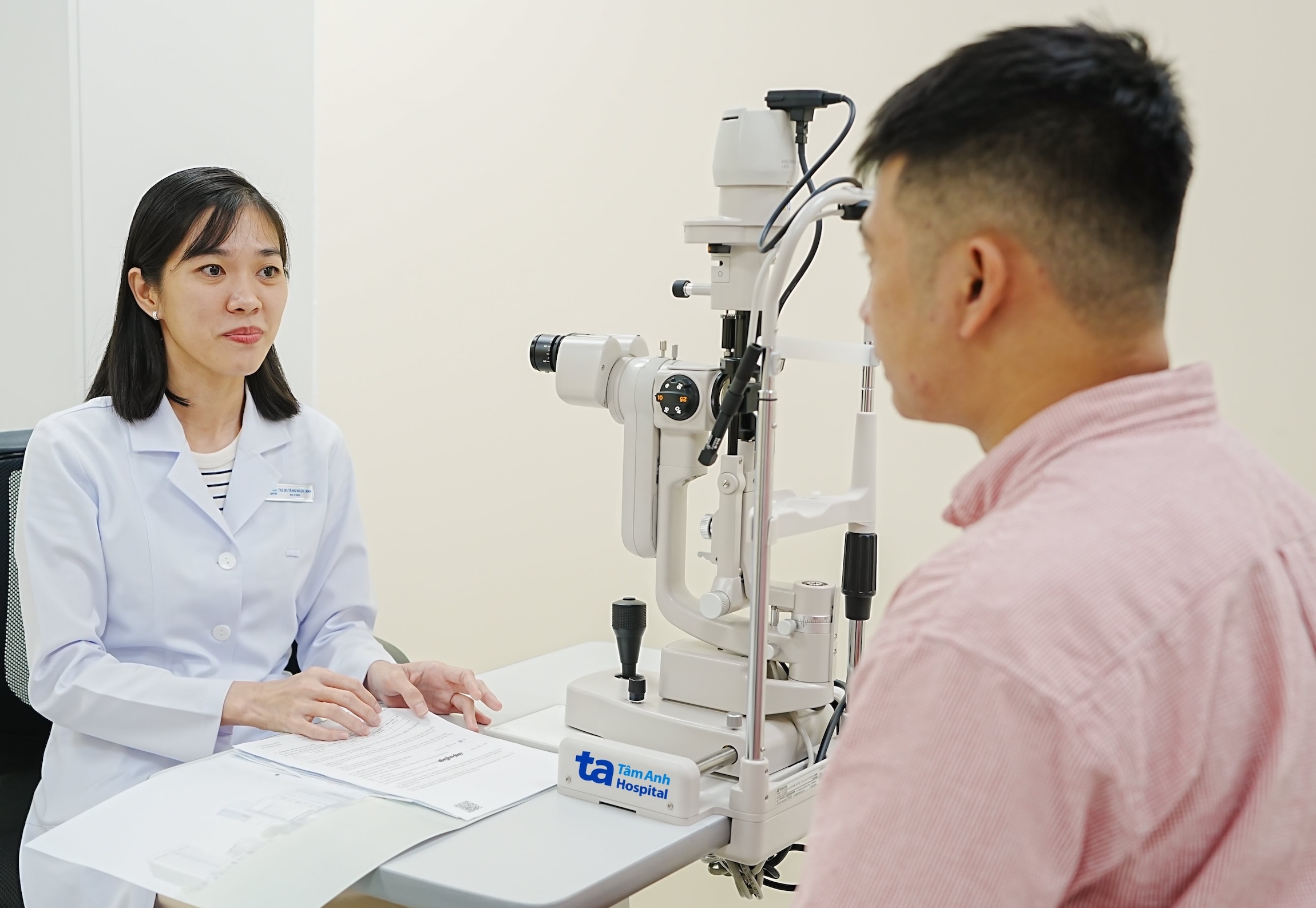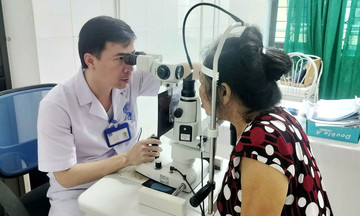Elevated intraocular pressure (IOP), commonly known as glaucoma, occurs when the pressure inside the eye exceeds the normal range of 11-21 mmHg. To maintain the eye's shape, size, and pressure, the ciliary body (the raised part of the choroid, located between the iris and the sclera) continuously produces aqueous humor. This fluid drains out through the Schlemm's canal (a channel located in the scleral sulcus). A healthy eye maintains a balance between the production and drainage of this fluid.
Doctor Tang Ngoc Anh, Deputy Head of the Ophthalmology Department at Tam Anh General Hospital's High-Tech Eye Center in Ho Chi Minh City, explains that prolonged high IOP can compress and damage the optic nerve. It also harms retinal ganglion cells (a type of nerve cell in the eye that cannot regenerate). This damage leads to glaucoma, vision loss, permanent narrowing of the visual field (the space the eye can see when looking fixedly at one point), and ultimately, blindness.
 |
Doctor Ngoc Anh examines and advises a patient. Photo: Tam Anh General Hospital |
Doctor Ngoc Anh examines and advises a patient. Photo: Tam Anh General Hospital
According to a study published in the US National Library of Medicine, glaucoma affects over 76 million people worldwide and is projected to exceed 110 million by 2040. Women, especially those of Asian descent, are at higher risk than men.
Doctor Anh notes that anyone can develop glaucoma, but some are at greater risk: those over 40, individuals on long-term corticosteroid medication (eye drops or systemic), those with underlying conditions like diabetes or high blood pressure, people with small eye size (due to severe farsightedness or small cornea), and those prone to emotional sensitivity or anxiety. Having a family history of glaucoma also significantly increases the risk.
While prolonged high IOP causes irreversible damage to the optic nerve, early detection and treatment can slow the disease's progression. Treatment options include medication (eye drops or oral), laser therapy (laser trabeculoplasty, iridotomy), and surgery (trabeculectomy, cataract surgery, drainage implant surgery).
Doctor Anh recommends regular eye exams for early detection and prevention of vision loss. Those at high risk should have check-ups every 3-6 months, while those at lower risk should schedule them every 6-12 months. Wearing protective eyewear outdoors or during sports to prevent serious eye injuries and using prescribed eye drops can also help reduce the risk of developing glaucoma.
Duc Tri












